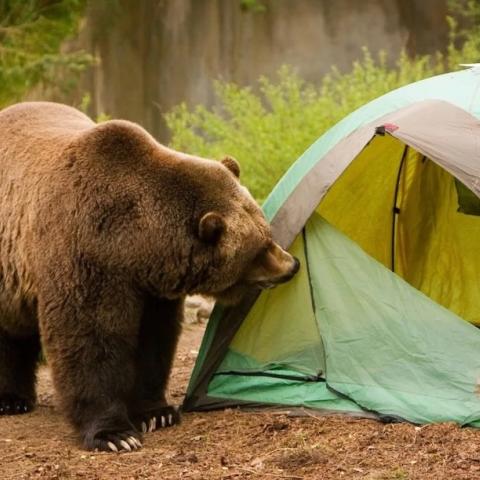Editor's note: The following column was written by Kent Nelson, executive director of Wyoming Wildlife Advocates.
In November 2014, in a stunning, out-of-the-blue reversal of decades of settled policy, the National Park Service ceded to Wyoming authority over wildlife on approximately 2,300 acres of state- and privately-owned "inholdings" within the boundaries of Grand Teton National Park.
At the time, several organizations, including the National Parks Conservation Association and Wyoming Wildlife Advocates (the organization which I represent), criticized this decision, declaring that it opened the door to hunting and trapping within the borders of one of the Park Service’s crown jewels.

If this herd of bison walks across inholdings within Grand Teton National Park, it could be hunted/Deby Dixon
And in fact, this quickly came to pass. The Wyoming Game and Fish Department, responsible for managing Wyoming's wildlife, almost immediately authorized hunting of elk and bison on park inholdings. Last fall three bison were taken by hunters on inholdings within the boundaries of the park.
Then, in 2015, WGFD redrew hunt areas for several species, and authorized hunting for moose and blue grouse on inholdings. Black bear hunting was also allowed.
The WGFD manages a wide array of species, most notably the big game species, but it also has authority to manage hunting and/or trapping of fur bearing animals and game birds.
The NPS decision enables the WGFD to authorize hunting or trapping on park inholdings of any, or all, of the species under its control.
That includes moose, deer, elk, cougars, black bear, bobcat, bighorn sheep, antelope, beaver, badger, marten, mink, muskrats, rabbits and snowshoe hares, squirrels, sandhill cranes, grouse, partridge, any migratory bird not protected under federal law, and more.
Also as a consequence of the NPS decision, certain other wildlife, including red foxes, coyotes, raccoons and porcupines, may be killed in unlimited numbers at any time by any lawful means on park inholdings.
Most appalling of all, WGFD will have the authority to allow hunting of grizzly bears and gray wolves on inholdings once their Endangered Species Act protections are removed.
So why then was this decision made and how can it be justified? After all, the laws regulations seem clear.
Under the Organic Act of 1916 the “primary responsibility” of the National Park Service is to “leave park resources and values unimpaired unless a particular law directly and specifically provides otherwise.”
In furtherance of this objective, Congress has reserved to itself the exclusive authority to make exceptions to the statutory mandate to preserve park resources.
The NPS itself has explicitly acknowledged this by stating in its Management Policies that “impairment of park resources and values may not be allowed by the Service unless directly and specifically provided for by legislation or by the proclamation establishing the park.”
And while Park Service regulations generally “do not apply on non-federally owned land and waters or on Indian tribal trust lands within National Park System boundaries,” specified regulations, including wildlife protection regulations, do clearly apply “regardless of land ownership, on all lands and waters within a park area that are under the legislative jurisdiction of the United States.”
The irony of this situation is heartbreaking: in Grand Teton National Park, known worldwide as a haven for wildlife, wildlife that people from around the world come to see might well be hunted. Some species already are being hunted within park boundaries.
This gives rise to the uncomfortable prospect that visitors who come to view our abundant wildlife will instead witness it being killed, quickly by a hunter's bullet, or slowly in a trapper's snare.
This is bad, bad news for our wildlife, our parks, and our tourism-based economy. The National Park Service’s decision to cede authority over wildlife on inholdings within the park is unjustified, unlawful, unconscionable and it must be challenged.




 Support Essential Coverage of Essential Places
Support Essential Coverage of Essential Places







Comments
Nice post Ray, this has been my experience in some cases also. I understand the need for sensitivity for the concerns of public, SWAT Team tactics or a to heavy handed enforcement approach often badkfires. I always thought the NPS had a good Law Enforcement policy, "the lowest effective level of enforcement" in dealing with violations. This can begin with a friendly educational approach, it can escalate, but it is always easier to escalate a situation than deescalate one.
I fear that it is death by suicide. The threat is more within than without.